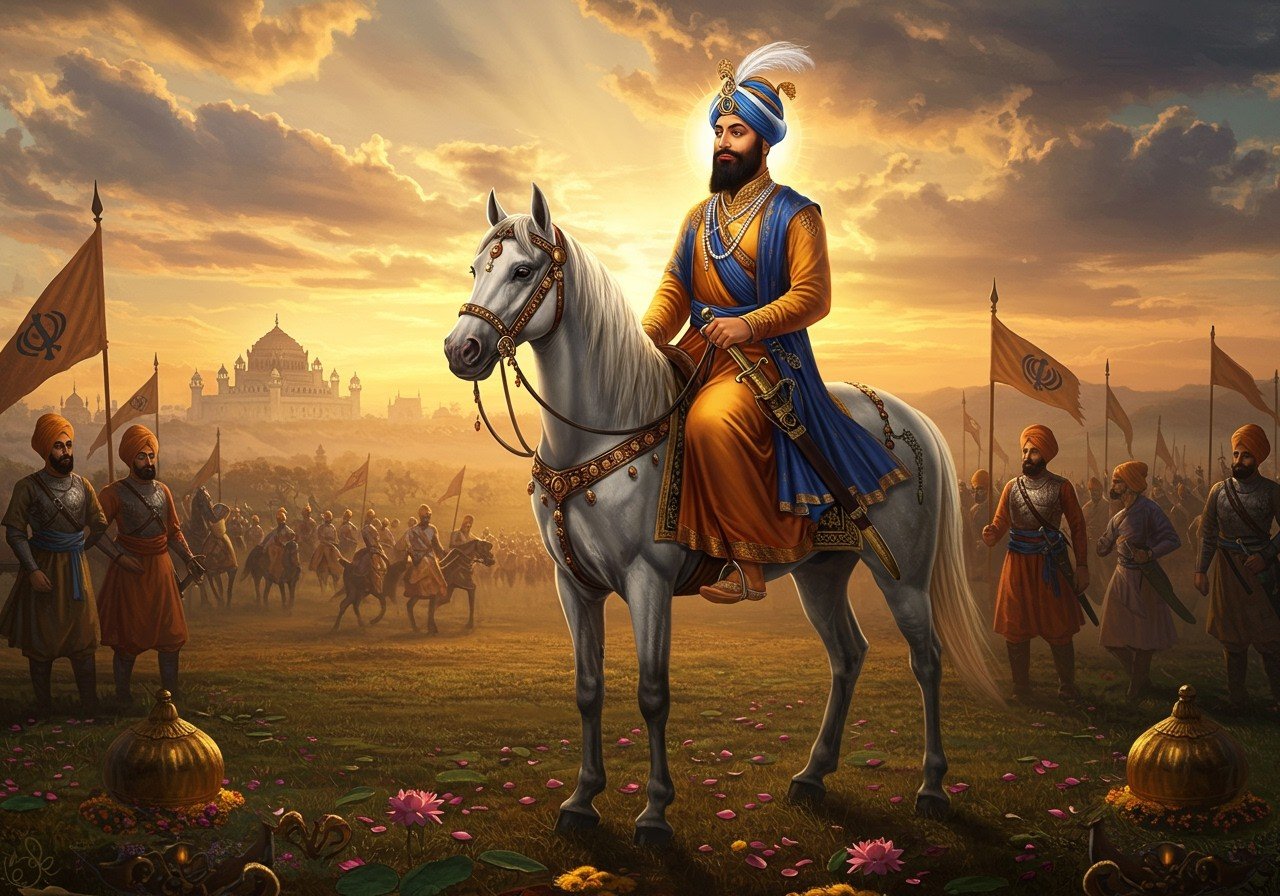
Guru Hargobind Sahib Ji, the sixth Sikh Guru, holds a unique place in Sikh history. He was a spiritual leader who also embraced the necessity of self-defense. In the challenging times of the early 17th century, under the shadow of the Mughal Empire and rulers like Shah Jahan, Guru Hargobind Sahib Ji embodied the concept of Miri-Piri – the balance of spiritual and temporal authority. This approach shaped the Sikh community’s response to oppression, ensuring its survival and growth.
The Battles Fought by Guru Hargobind Sahib Ji
Guru Hargobind Sahib Ji engaged in several key battles, not for conquest, but to protect the Sikh community and uphold dharma. These confrontations were strategic and defensive, safeguarding the Sikh way of life against tyranny. His courage and leadership in these battles instilled a spirit of resilience within the Sikh community, demonstrating that faith and valor could coexist. Let’s delve deeper into some of these important battles:
- Battle of Rohilla (1621): This battle, fought near Sri Hargobindpur, marked the first armed clash between the Guru’s forces and the Mughals. Though a smaller conflict, it was a significant turning point, signaling the community’s readiness to defend itself. This initial stand against Mughal aggression laid the groundwork for future confrontations.
- Battle of Sangrana (1628): This battle was a significant confrontation against the Mughal forces. It highlighted the growing strength and organization of the Sikh forces. The outcome strengthened the community’s resolve to protect its way of life against external threats.
- Battle of Amritsar (1634): Guru Hargobind Sahib Ji led the Sikhs to a decisive victory against a larger Mughal army in this pivotal battle. This victory was a major boost to Sikh morale and solidified Guru Hargobind Sahib Ji’s reputation as a skilled military leader. It instilled confidence in the Sikh community, demonstrating that faith combined with strategic action could lead to success. Learn more about the historical significance of Amritsar in Sikhism from our blog post about Lord Shiva temples in Maharashtra.
- Battle of Lahira (1634): Fought shortly after the Battle of Amritsar, the Battle of Lahira further demonstrated the Sikh forces’ growing military capability and resolve to resist Mughal oppression. This victory further bolstered the community’s confidence and consolidated its military gains.
- Battle of Kartarpur (1635): This important victory against the Mughals reinforced the Sikh community’s resilience. It cemented their image as a strong and determined force, ready to protect their faith and way of life. You can discover more about the significance of historical Sikh temples like the Kopineshwar Mandir in our post on Kopineshwar Mandir’s history and rituals.
- Other Battles: Several other battles, including the Battle of Gurusar, Hargobindpur, Maham, Padiala, Kiratpur, and Phagwara (1635), showcased Guru Hargobind Sahib Ji’s commitment to protecting the Sikh panth. These conflicts, though less documented, demonstrate the persistent challenges faced and overcome by the community. These lesser-known skirmishes further demonstrate the dedication and unwavering spirit of the Sikh community in upholding their faith.
Painde Khan: A Story of Loyalty and Betrayal
The story of Painde Khan, once a trusted aide who turned against Guru Hargobind Sahib Ji, is a poignant example of the complexities of loyalty and betrayal. Their encounter wasn’t just a military clash; it became a powerful lesson in honor and justice for the Sikh community. This event solidified the importance of staying true to one’s values, even in the face of adversity. For insights into the divine warrior prince, Lord Kartikeya, and his symbolism of overcoming challenges, read our blog post about Lord Kartikeya. You can also explore our article on Lord Ganesha, the remover of obstacles, to understand the significance of overcoming challenges in our spiritual journey.
The Guru’s Military Philosophy: Righteousness and Defense
Guru Hargobind Sahib Ji’s military strategy wasn’t about conquest. It was deeply rooted in dharma – upholding righteousness and protecting the innocent. The establishment of the Akal Takht symbolized this temporal authority, alongside the spiritual guidance he provided. He organized the Sikh army to defend their faith and their right to practice it freely. This emphasis on self-preservation rather than aggression laid the foundation for the future of the Sikh community.
A Lasting Legacy of Courage and Faith
Guru Hargobind Sahib Ji’s leadership had a profound and lasting impact on Sikhism. He showed that spirituality and self-defense were not mutually exclusive. His courage inspired future generations to resist injustice and defend their beliefs. This martial spirit, embedded in the Sikh identity, ultimately paved the way for the formation of the Khalsa by Guru Gobind Singh Ji.
Honoring the Legacy with Poojn.in
At Poojn.in, we understand the deep respect you hold for Guru Hargobind Sahib Ji’s legacy. We offer a curated selection of authentic items to support your spiritual practices and commemorate his teachings. Explore our collection of pure brass Panchmukhi Hanuman idols, symbols of strength and prosperity, here and here. You can also find Lord Kubera murtis, the deity of wealth and prosperity.
We also offer essential items for your daily rituals, such as pure stainless steel achmani spoons, polished brass darpans (mirrors), and Guru Chandan tilak.
Guru Hargobind Sahib Ji’s legacy reminds us that faith and courage are powerful forces. He demonstrated that defending one’s beliefs is not just a right, but sometimes a necessity. His life serves as an inspiration, showing us how to face adversity with unwavering strength, guided by spiritual principles.


